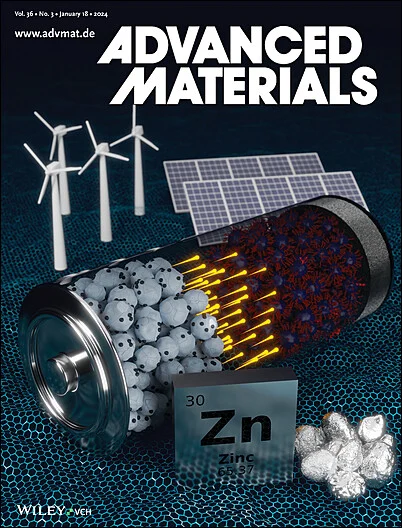用于仿生夜间偏振感知的有机单晶光电晶体管的自适应极化光响应(硕士论文,14/2025)
IF 26.8
1区 材料科学
Q1 CHEMISTRY, MULTIDISCIPLINARY
引用次数: 0
摘要
在论文编号2415530中,张秀娟及其同事报道了一种用于仿生夜间偏振感知的光自适应偏振敏感有机光电晶体管。在200 nW cm−2的超弱光下,通过时间积累获得了>;105的超高二向色比。在人工月光环境下实现高对比度偏振成像,线偏振度为0.26,达到夜活动屎壳郎的探测阈值。本文章由计算机程序翻译,如有差异,请以英文原文为准。




Self-Adaptive Polarized Photoresponse in Organic Single-Crystal Phototransistors for Bionic Night-Time Polarization Perception (Adv. Mater. 14/2025)
Bionic Polarization Vision
In article number 2415530, Xiujuan Zhang and co-workers report a photo-adaptive polarization-sensitive organic phototransistor for bionic night-time polarization perception. Ultrahigh dichroic ratio of >105 is achieved through time accumulation under ultraweak light of 200 nW cm−2. High-contrast polarization imaging is realized in artificial moonlit environment with a low degree of linear polarization of 0.26, reaching the detection threshold of night-active dung beetles.
求助全文
通过发布文献求助,成功后即可免费获取论文全文。
去求助
来源期刊

Advanced Materials
工程技术-材料科学:综合
CiteScore
43.00
自引率
4.10%
发文量
2182
审稿时长
2 months
期刊介绍:
Advanced Materials, one of the world's most prestigious journals and the foundation of the Advanced portfolio, is the home of choice for best-in-class materials science for more than 30 years. Following this fast-growing and interdisciplinary field, we are considering and publishing the most important discoveries on any and all materials from materials scientists, chemists, physicists, engineers as well as health and life scientists and bringing you the latest results and trends in modern materials-related research every week.
 求助内容:
求助内容: 应助结果提醒方式:
应助结果提醒方式:


